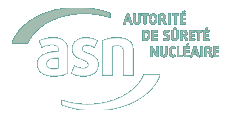| Chapter 04 |
- VERIFYING THAT THE LICENSEE ASSUMES ITS RESPONSIBILITIES
- The principles underpinning the regulatory role
- Regulating nuclear activities: a vast area
- Regulating safety
- Regulating activities entailing a risk of exposure to ionising radiation
- Regulating the enforcement of Labour law in nuclear power plants (NPPs)
- REGULATION THAT IS PROPORTIONATE TO THE ISSUES INVOLVED IN THE ACTIVITIES
- Defining the issues
- Deploying the principle of licensee prime responsibility
- Operations subject to a licensee internal authorisations procedure
- Internal monitoring of radiation protection by the users of ionising radiation
- Packages not requiring approval
- Increasing AS regulation resources by approving organisations and laboratories
- DEPLOYING THE MOST EFFICIENT REGULATION AND INSPECTION MEANS
- Assessing the supporting documents submitted by the licensee
- Analysing the information supplied by basic nuclear installation licensees
- Reviewing the procedures laid down by the Public Health Code
- Inspection of installations and activities
- Inspection objectives and principles
- Inspection resources
- Inspection of basic nuclear installations and pressure equipment in 2010
- Inspection of radioactive material transport in 2010
- Inspection of small-scale nuclear activities in 2010
- Inspection of ASN approved organisations and laboratories in 2010
- Checks on exposure to radon and Naturally Occurring Radioactive Materials (NORM) in 2010
- Regulating the impact of nuclear activities on the environment
- Regulating basic nuclear installation discharges
- Assessing the radiological impact of nuclear activities
- Learning the lessons from significant events
- Anomaly detection and analysis
- Implementation of the approach
- Conducting a technical inquiry in the event of an incident or accident concerning a nuclear activity
- Public information
- Statistical summary of events in 2010
- Raising awareness
- MONITORING ENVIRONMENTAL RADIOACTIVITY
- European context
- The purpose of environmental monitoring
- Content of monitoring
- Environmental monitoring nationwide
- Guaranteeing measurement quality
- Laboratory approval procedure
- The approval commission
- Approval conditions
- IDENTIFYING AND PENALISING INFRINGEMENTS
- Ensuring that licensee penalty decisions are proportionate, fair and consistent
- Implementing a policy of penalties
- For the BNI and RMT licensees
- For persons in charge of small-scale nuclear activities, approved organisations and laboratories
- For noncompliance with labour law
- 2010 results concerning enforcement and penalties
- Information about ASN's inspections
- OUTLOOK
|
|
In 2011, ASN scheduled 1920 inspections on BNIs, radioactive material transport, activities using ionising radiation, organisations and laboratories it has approved and activities involving pressure equipment. Continuing in line with 2010, ASN will give priority to the inspection of the strong-implication activities defined in point 2.1.
Other activities, such as services in BNIs, the supply of electrical generators of ionising radiation and computer tomography will also receive particular attention.
ASN is currently revising the conditions of notifying significant events, which will take into account the experimentation of the events notification guide in small-scale nuclear activities and the changes in regulations in the BNI sector. The notification criteria and conditions shall be detailed and harmonised between the different sectors.
ASN will continue to deploy its action plan relating to tritium. This action plan will be tracked over time by a monitoring committee, which will hold its first meeting in the first half of 2011.
With regard to the monitoring of environmental radioactivity, ASN will continue the work it has started with all the players in the national measurement network. This will notably include assessing the results after one year of existence of the website of the National Network of Environmental Radioactivity Monitoring and defining the changes in the monitoring strategy around nuclear sites and over the rest of the national territory.
Lastly, ASN is preparing to inspect a new domain, namely the safety of radioactive sources (see chapter 10).
|




